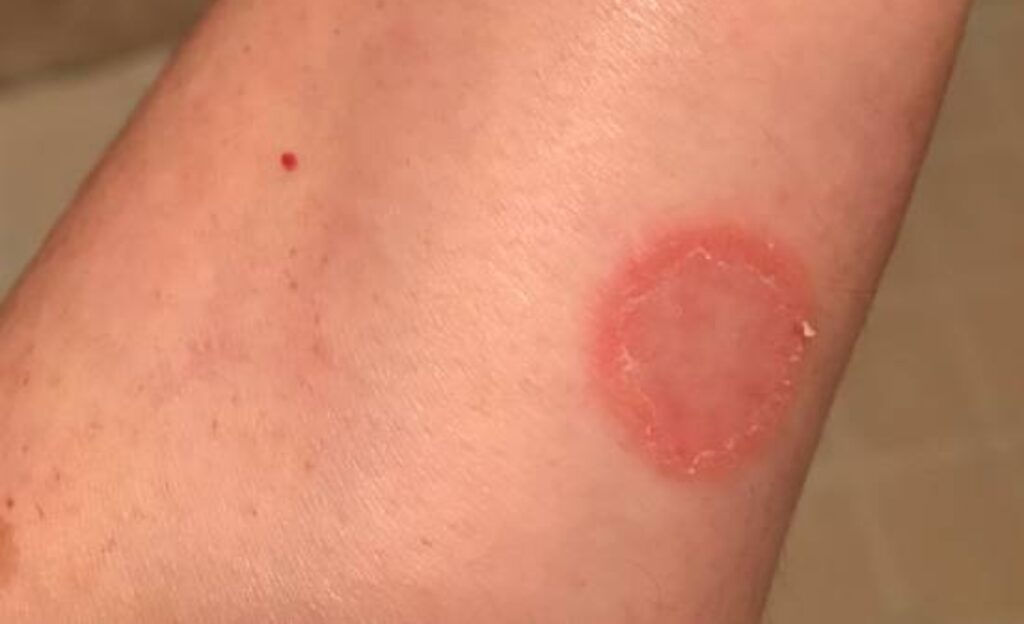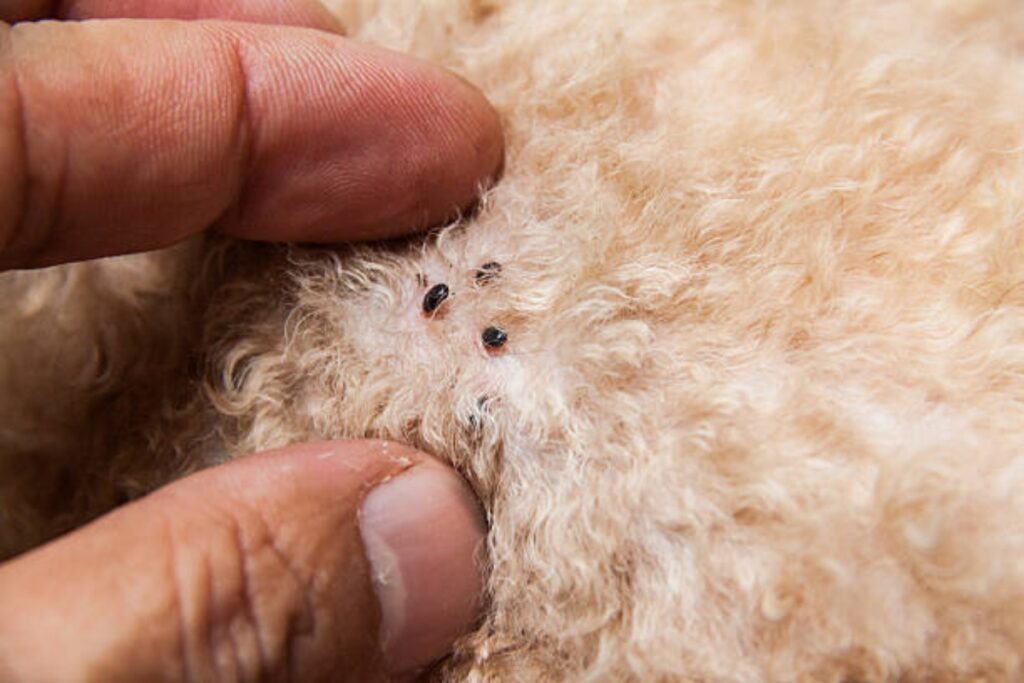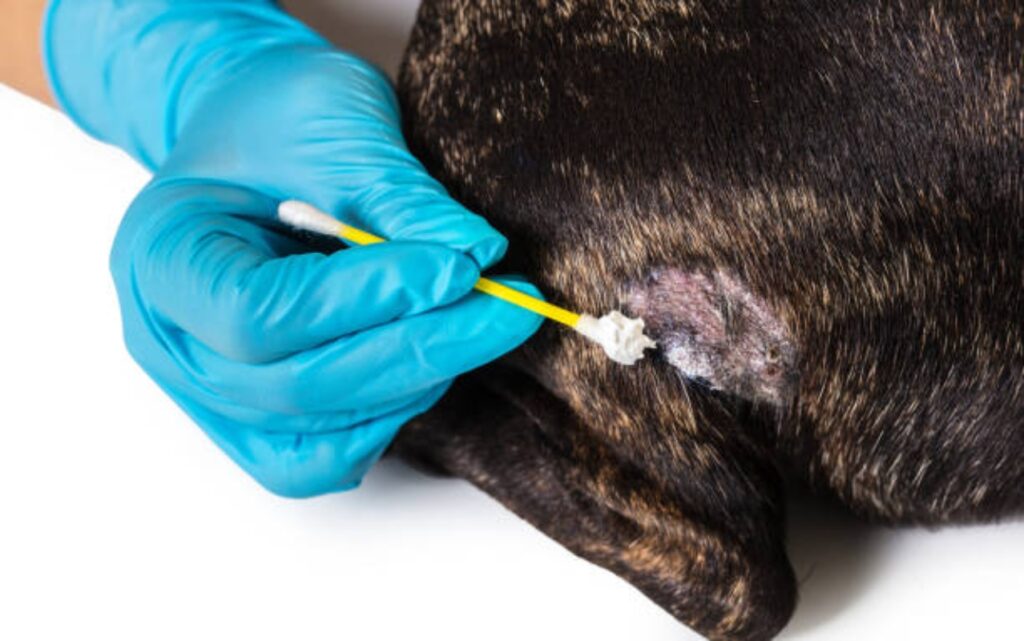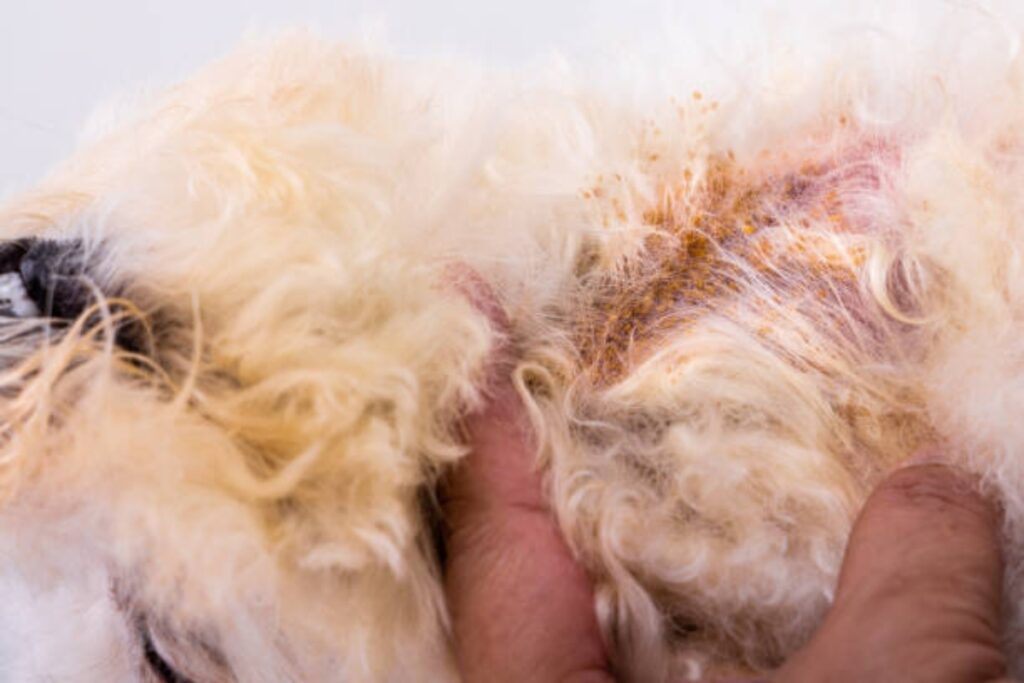
Toxocariasis is caused by the larvae of roundworms found in dog and cat feces. Humans can contract it through accidental ingestion, leading to skin rashes, coughing, and in severe cases, vision problems if the larvae migrate to the eye. Proper hand hygiene and regular deworming for pets can help prevent this condition.
Ringworm: A Fungal Foe

Despite its misleading name, ringworm isn’t a worm but a fungal infection. It often appears as a red, circular rash on your skin, with a scaly or itchy texture. Direct contact with an infected pet’s fur or skin can transfer this fungus, so wearing gloves and washing hands thoroughly after handling is crucial.
Scabies: The Itchy Infestation

Scabies, caused by the Sarcoptes scabiei mite, is highly contagious and can transfer from pets to humans. It leads to intense itching, red bumps, and a rash that spreads quickly, usually around the wrists, elbows, or waistline. If you suspect scabies, it’s best to see a doctor for prescription treatment, as it doesn’t go away on its own.
Cat Scratch Disease: More Than Just a Scratch

Cat scratch disease, caused by the Bartonella henselae bacteria, is transmitted through scratches or bites from an infected cat. Symptoms include swollen lymph nodes, fever, and skin pustules. To avoid it, keep your cat’s nails trimmed and clean any scratches promptly with soap and water.
Flea Allergies: The Bite You Didn’t Expect

Even if you’re not directly bitten by fleas, your pet’s fleas can cause allergic reactions in humans. The bites usually appear as small, red, itchy bumps, often on the ankles and legs. To minimize the risk, keep up with regular flea prevention treatments for your pets and thoroughly clean your home.
Hookworms: A Sneaky Skin Invader

Hookworms are intestinal parasites in pets that can burrow into human skin. Walking barefoot on contaminated soil or sand can lead to an itchy rash, known as “cutaneous larva migrans,” with visible, winding lines under the skin. Treatment involves antiparasitic medication, so consult a healthcare provider if you notice these symptoms.
Staphylococcal Infections: A Bacterial Concern

Pets, particularly dogs, can carry Staphylococcus bacteria on their skin or in their noses without showing symptoms. When these bacteria transfer to humans, they can cause painful skin infections, including boils or impetigo. If you notice red, swollen, or pus-filled sores, seek medical treatment to prevent complications.
Cheyletiellosis: Walking Dandruff

Cheyletiellosis, also known as “walking dandruff,” is a skin condition caused by mites that resemble moving dandruff flakes. Pets infested with these mites can transfer them to humans, leading to an itchy rash. Treatment involves using antiparasitic medications for both pets and humans, along with thorough cleaning of the living environment.
Dermatophilosis: From Wet Fur to Human Skin

Dermatophilosis, a bacterial infection caused by Dermatophilus congolensis, thrives in wet and humid conditions. It typically affects animals with moist or matted fur and can spread to humans through direct contact, causing scaly or crusted lesions. Using gloves when grooming or bathing pets and keeping their fur dry can reduce the risk of transmission.
Sporotrichosis: A Thorny Issue

Sporotrichosis is a fungal infection that can spread from pets to humans through scratches or bites, particularly if the pet has skin ulcers. The fungus causes small, painless bumps on the skin, which can develop into open sores. Early treatment with antifungal medication is essential, as the infection can become chronic without it.
Stay connected with us for more stories like this! Follow us to get the latest updates or hit the Follow button at the top of this article, and let us know what you think by leaving your feedback below. We’d love to hear from you!







